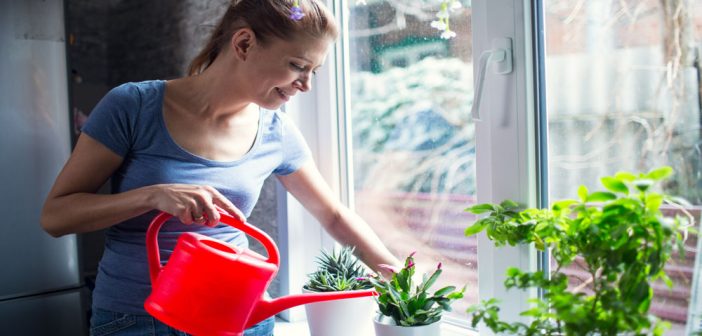Everyone expects to go outside into a world that is filled with pollutants. While clean air has become a major concern, so far there have been few improvements in the overall purity of the air you breathe. That should be all the more reason to make sure that when you’re inside, the air in your home is clean and is not detrimental to your health.
Why Clean Air is Important
For those with any type of autoimmune disorder such as asthma, clean air is a near-necessity in order to live a normal, functional life. Dirty air can contribute to asthma attacks, allergies, and possibly cancer.
How Clean Air Impacts Your Health
If you suffer from allergy symptoms including headaches, you’d be surprised how those symptoms can be relieved by cleaner air. Serious autoimmune disorders and Lyme disease may be helped by removing triggers in the air. Those who are prone to headaches, clean air may also help to prevent or alleviate symptoms.
Did you know that plants help remove pollutants from the air? Most people are aware that plants breathe in carbon dioxide and breathe out oxygen, but they may not be aware that plants can also absorb such elements as formaldehyde, a potentially dangerous toxin that is both in your furniture and probably in many of your cleaning supplies. They may also help to remove benzene and trichloroethylene, and rid the air of biological pollutants.
Best Plants for Clean Air
Indoor plants that can help you breathe cleaner. You can find these plants at reasonable prices, and they can make a world of difference.
Peace Lilies
Peace lilies not only clean the air by getting rid of formaldehyde, but they can also destroy mold, remove benzene and trichloroethylene, and give off a nice floral scent. They have beautiful green foliage and large, white blossoms. Peace lilies are perennials, which means that they won’t require replanting every year.
Garden Mum
Another plant that combines both beauty and usefulness is the garden mum. It is a type of chrysanthemum that removes various toxins from the air. Garden mum is a perennial, and its flowers range in color from cream to yellow to purple. In addition to other chemicals, it helps to remove ammonia from the air. It is inexpensive and easy to find at stores for houseplants.
Bamboo Palm
A bamboo palm can grow from four to twelve feet high, making it a very interesting houseplant. Their height also means they can filter a great deal of air. Besides that, it can bring some moisture to dry air and a tropical look to your home. They do best with plenty of sunlight, but like most plants called palms, they are hard to kill.
Snake Plant
Looking for a plant that is nearly impossible to kill? Get a snake plant, also known as mother-in-law’s tongue. This plant requires little watering and upkeep and can be an advantage if you are allergic to pollen. It has beautiful foliage, and it removes formaldehyde, benzene, trichloroethylene, and xylene from the air. \
Rubber Plant
A rather odd plant that also has to be on any list that offers plant purification for your air is the rubber plant. It can grow up to eight feet in height, and yes, the leaves do look very rubbery. In fact, someone coming into your home might think that the plant looks fake, but it certainly isn’t. The rubber plant works well to filter air and remove toxins. It even fights diseases and parasites, and the dark green leaves with a tint of red are attractive.
Ficus
Then there is a plant that is oddly finicky and hardy at the same time. That is the ficus, also known as the weeping fig. When grown indoors, it is a small tree that grows anywhere from 2 to 10 feet. It is hardy because it doesn’t need a lot of water and isn’t easy to kill, but it is finicky in regards to light. If the lighting around it changes even slightly, its incredibly light-sensitive leaves will fall off almost entirely to make way for new leaves adjusted to the lighting. That doesn’t mean that the ficus is dead. It just means that it is picky about light. Despite this minor setback, it is a powerhouse when it comes to purifying the air.
Boston Fern
The Boston fern is another common houseplant that works well for cooler areas with higher humidity. It is also called the sword fern, although it must be admitted that its leaves in no way really resemble swords. Its other name, the fish bone fern, fits its appearance better. It has small, abundant leaves. The Boston fern is a perennial that can grow up to almost four feet high. While it may be higher maintenance than some other plants, it also removes formaldehyde and xylene. It can be used as a hanging plant to add some atmosphere to any room.
These plants will keep you breathing cleaner air in your home. Normally, pollutants like formaldehyde and xylene and the rest cannot be removed from the air with a normal home air filter. Filters generally work to help with dust and not much else. With plants like these, you can have natural air filters that are affordable and don’t need to be replaced every few months.
Many of these plants live for years. They not only contribute to the purity of your air, but they also add beauty to your home. In fact, with all of the concerns about outdoor pollution, you spend much more time indoors than out. Make sure that your time spent indoors isn’t contributing to breathing troubles and allergies.
Other Ways to Keep the Air Clean in Your House
Plants aren’t the only way you can reduce pollutants. There are several other things you should think about to make the air quality in your home better.
• Standing water encourages the growth of mildew and mold. Don’t let leaks sit for weeks or months before you take care of them!.
• If you smoke or have people in your house that do, smoke outside. Cigarette smoke is a very problematic pollutant that causes many health problems.
• Select paints with low toxicity and low volatile organic compounds, which may include formaldehyde. These paints will release gas for a long time, contributing to the poor air in your home.
• Clothes that you get dry-cleaned or even sometimes bring home from stores should be aired before bringing them inside.
• When you use cleaners or nail polish or anything else, look for the least toxic ones you can find.
All of these little things will help keep you healthy and your home a safe breathing environment.








